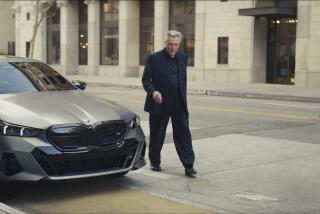‘Uncle Drew’ shows that audiences will pay to watch branded content
Nearly 1.7 million people saw the movie “Uncle Drew” during its opening weekend, paying money to watch what some consider to be a 105-minute-long Pepsi commercial. Experts say this probably won’t be the last time we can expect audiences to pay to see branded content.
The film, which Pepsi co-produced, features Pepsi’s logo prominently in some scenes and centers the plot on a character who is synonymous with the beverage maker’s online ad campaign.
What makes branded content different from other kinds of advertising is that it does not have a sales message, said Mara Einstein, author of “Black Ops Advertising.” Instead of selling, branded content informs and entertains. “The goal at the end of all this is when you need to go out to buy this product, you’ll buy from [the brand],” Einstein said. “But it’s a longer time frame.”
Brands have been working in this space between entertainment and salesmanship for a long time, Einstein said, dating back to the advent of soap operas. The serialized daytime dramas were frequently sponsored by companies selling household cleaning products to homemakers.
Since then, branded content has expanded to follow viewers wherever they are — in video games, movies, television shows, web-based videos, tutorials and more. Pepsi, whose branding strategy has included sponsored halftime shows, Gatorade-produced documentaries and endorsements from celebrities such as Michael Jackson, has long linked its branded content with popular culture.
The “Uncle Drew” journey from YouTube to ad campaign to full-length feature film began in 2012 when NBA star Kyrie Irving first took on the role as the basketball-playing septuagenarian Uncle Drew. The first video, written and directed by Irving, racked up more than 50 million views on Pepsi’s YouTube channel. A number of sequels followed, adding to the roster basketball pros such as Kevin Love, Nate Robinson, Maya Moore, Baron Davis and Ray Allen.
Uncle Drew’s embodiment of all things street ball, such as good-humored trash-talking and performative one-upsmanship, adds an authenticity that a traditional ad wouldn’t be able to provide, said Jay Tucker, executive director of the UCLA Anderson Center for Management of Enterprise in Media, Entertainment & Sports.
“Movies have legs they didn’t have before,” Einstein said. With streaming services such as Netflix and Hulu, where a movie can be called up on demand, the life span of a movie is longer than it used to be. This presents an opportunity for brands to build their relationship with consumers over an extended time, Einstein said.
That strategy makes financial sense too. “Uncle Drew” cost film studio Lionsgate less than $20 million to produce before marketing, according to the Hollywood Reporter — a low price for a movie with mass-market appeal. The fact that marketing costs would have included promoting the brand as well as the film adds an efficiency that doesn’t exist for a traditional film, Tucker said.
Compare the $20 million it cost to produce “Uncle Drew” with the $5 million that Pepsi paid for a 30-second Super Bowl ad this year, Einstein said. The nearly two hours of movie content could, in theory, be cut and repackaged in countless ways to create yet more content for Pepsi, she said, extending the life of the material even further.
Pepsi’s commercial-turned-feature film ranked fourth in box-office sales its opening weekend and brought in $15.5 million, a modest amount compared with the latest installment of “Jurassic World,” which brought in nearly 10 times as much the week before.
PepsiCo declined to discuss the financials driving the expansion of the “Uncle Drew” franchise, but Lou Arbetter, general manager of Pepsi Productions, said the company considers the film a success. “We’re very happy with the performance of the movie and with the natural connection folks make between the brand and the character,” Arbetter said. “People want to be a part of this.”
Films are just one avenue for brands to engage audiences. Tucker said virtual reality, augmented reality and other premium immersive experiences present an opportunity for brands to reach a wider audience through entertainment.
“In some cases you might get really delightful experiences,” Tucker said. Automaker Ford has experimented with virtual reality, immersing viewers in a pit crew at Le Mans and simulating distracted driving to teach teens in Europe about roadway safety.
Tucker cited video games as an example of earlier efforts to snag audiences with branded content, including “Cool Spot,” a 1993 video game released on the Sega Genesis platform featuring the 7Up soda mascot.
Key to the success of these branded experiences — no matter the platform — is that the content hits the right note with the audience, Tucker said. “Just because it’s branded doesn’t mean it’s a lesser-quality product,” he said. “When there is some synthesis between the brand identity and the content that resonates with the audience, that’s a ripe opportunity for investment.”
Moore writes for the Washington Post.
ALSO
Review: ‘Uncle Drew’ is the surprise comedy of the summer
‘Get Out’ breakout Lil Rel Howery takes the lead in ‘Uncle Drew’
Kyrie Irving talks ‘Uncle Drew’ movie, recovering from knee surgery and more
More to Read
Inside the business of entertainment
The Wide Shot brings you news, analysis and insights on everything from streaming wars to production — and what it all means for the future.
You may occasionally receive promotional content from the Los Angeles Times.






